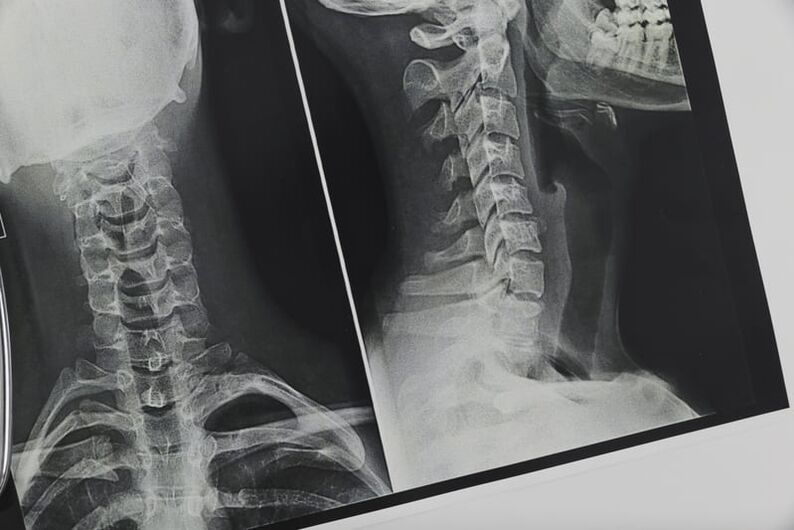
A sedentary lifestyle is becoming the key to the development of many diseases associated with musculoskeletal disorders. The most common disease is osteochondrosis of the neck, which affects the intervertebral discs. This disease occurs suddenly and develops for a long time. Premature treatment leads to a significant deterioration in the quality of health.
Typical symptoms of cervical osteochondrosis:
- Headache in the back of the head;
- Dizziness;
- Pain in arms, shoulders, back;
- Crack in the neck;
- Numbness of the limbs;
- Deterioration of vision;
- Fatigue, appearance of muscle tension at the least physical exertion;
- dizziness;
- Motion coordination is interrupted.
Very minor symptoms can become an irreversible pathology of the spine. Therefore, if the above signs appear, it is essential to look for ways to prevent the development of the disease.

Causes and consequences of cervical osteochondrosis
The onset of the disease is due to the following factors:
- Sitting (office, office) lifestyle;
- malnutrition (lack of calcium, magnesium);
- Heredity;
- Hypothermia, mechanical damage to the neck;
- Weight-lifting;
- Being overweight;
- Drink alcohol.
If you do not take preventative measures and do not take part in treatment, but only take painkillers, complete destruction of the thinned bones may occur. In addition, the development of the disease leads to a change in the position of the vertebrae, a compression of the blood vessels. As a result, the blood begins to circulate worse, the normal functioning of the cardiovascular system is disrupted, and the activity of the brain deteriorates. In addition, patients often complain of migraine, decreased visual acuity, high blood pressure, or hypotension. The most dangerous consequences are:
- Intervertebral hernia;
- Spinal stroke;
- Vestibular stem syndrome;
- Compression of the vertebral artery.
Only timely treatment will stop the progressive development of the disease.

How to cure osteochondrosis of the neck at home
The patient will receive a list of self-medication recommendations even after contacting trained professionals. Positive results can only be achieved by performing a series of procedures on a regular basis, which includes anesthesia using an ointment, mixture, cream. Significant results in the prevention of cervical osteochondrosis can be achieved through self-massage and gymnastic exercises.
Rub the affected area to relieve pain, normalize blood circulation and eliminate inflammation. Rubbing recipes:
- Mix the vodka with horseradish, the roots of a plant crushed in a blender, and an liquid in equal proportions. The infusion is rubbed overnight for 14 days.
- The combination of olive oil, plantain and sage is poured with 2 tablespoons of fatty material (50 ml) and petroleum jelly (40 ml). The medicine is rubbed around the neck three times a day.
- The boiled potatoes are broken through and mixed with honey, after the mixture has cooled slightly, it should be applied to the affected area and wrapped with foil and a handkerchief.
You need to take tinctures and decoctions to restore and enrich your body with vitamins. The use of cinquefoil is considered effective. Plant 30 gr. dry, pour hot water (0, 5 liters) and infuse for 3 weeks. The medicine should be taken 1 tablespoon three times a day. l.
An equally popular recipe is the parsley root decoction, which is crushed and poured with boiling water per 100 grams. the roots require 1 liter of water. Boil the composition for 1. 5 hours, then take 1 tbsp. l. three times a day. The course lasts 3 weeks.

Cervical osteochondrosis can be treated with self-massage
Regular physical exertion of the painful area will help stop the disease from progressing. Massage does not take much time, but it does require a careful approach, studying hot spots. Therefore, unaffected zones must be found before proceeding.
Procedure for self-massage:
- Recording a sitting position;
- Complete relaxation of the body;
- Place the fingers around the neck and perform a light caress from top to bottom for 2 minutes;
- The exercise is repeated, only with great effort with the thumbs;
- The lateral surface of the cervical spine is rubbed in a circular motion;
- Kneading muscles by switching and pinching;
- After finishing caressing.
The session should last 8-10 minutes.
Combined with massage, therapeutic exercises are considered effective. The practice should be smooth and not tiring. Emphasis should be placed on the cervical spine, head turns, neck extensions, shoulder movements.


















































